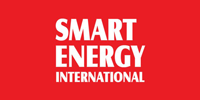
VSUN Energy, an organisation formed with the express intent of increasing awareness of the benefits of vanadium-redox flow batteries (VRFB) has taken to selling systems using the technology; its first residential case study came about because equipping a new farmhouse with a VRFB-based standalone power system was cheaper than connecting that rural home to the grid — never mind the savings that will ensue as the farm lives through its first quarter without receiving a power bill.
The standalone power system (SPS) tailored for this property consists of 12 kW of solar PV, a 5 kW/30 kWh VRFB with a maximum discharge of 7 kW; an Australian-made Selectronic inverter and an 18 KVa diesel redundancy back-up system. The SPS is designed to provide an uninterrupted, clean, safe source of energy, primarily generated by direct and stored solar energy.
VSUN business development manager Zamien Sumich tells pv magazine the system is currently more than adequate to supply a self-sufficient household, with a cool room to sustain the family in between visits to distant shops, and some farming machinery.
But there are other aspects of vanadium-flow batteries that make them suited to remote or rural life in Australia. For example, says Surich, they can operate in a wide range of temperatures without the need for heating or cooling.
Charging with positives
They’re non-flammable, so cannot start a house fire, or a bushfire. In this regard they’re also a step up from poles-and-wires grid connection — even accumulated dust when mixed with rain water on electricity wires can cause pole-top fires that may spark bigger conflagrations or cause loss of power.
VRFBs also offer virtually unlimited cycling, which makes them ideal for mining applications where constant electricity supply is crucial and variable renewable generation may require frequent fast battery response; and for VPPs where the operator wants to participate in FCAS or arbitrage markets, and may want to cycle its fleet of residential batteries a couple of times a day — such use would radically shorten the life of currently more popular battery technologies.
In addition, says Sumich, “The internal electrolyte solution in VRFB batteries doesn’t degrade,” so they can can continue to provide storage long after the common warranty period of 20 years. Of course, he adds, that because the battery is a machine, some moving parts such as pumps that move the electrolytes through a core of positive and negative electrodes may need to be replaced, but remote monitoring and annual maintenance checks can ensure continuous operation. A VRFB shifts vanadium ions between different oxidation states to store and release chemical energy.
read more








